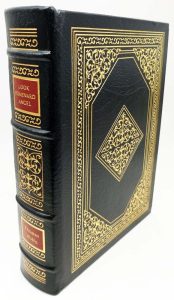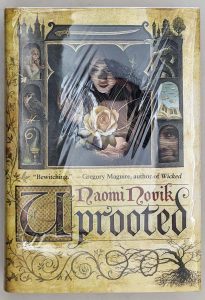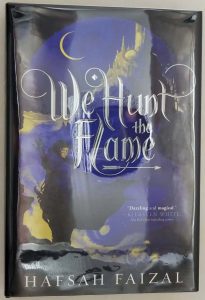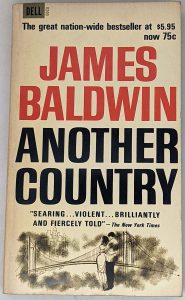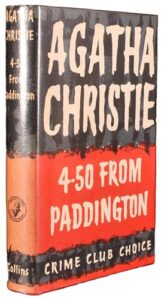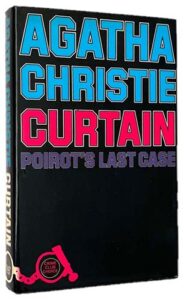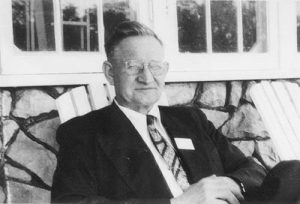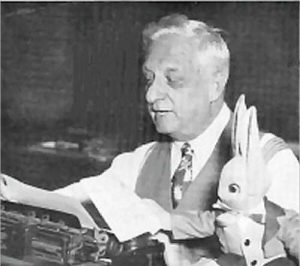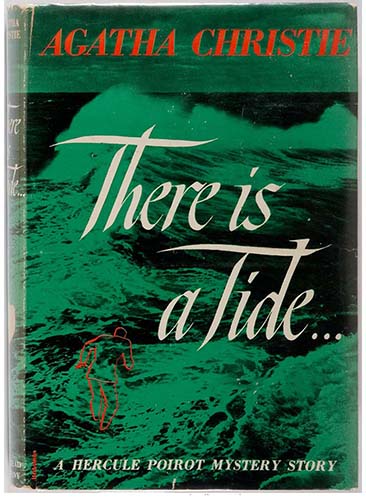
Taken at the Flood is a work of detective fiction by British writer Agatha Christie, first published in the US by Dodd, Mead and Company in March 1948 under the title of There is a Tide . . . and in the UK by the Collins Crime Club in the November of the same year under Christie’s original title.[2] The US edition retailed at $2.50 and the UK edition at eight shillings and sixpence (8/6). It features her famous Belgian detective, Hercule Poirot, and is set in 1946.
The novel tells a story of post-World War II England, when life seems turned upside down, with the relief of the end of the war, the changes from who lived and who died, and the economic challenge of post-war life, playing out for one family in a village not far from London. The detective Superintendent Spence is introduced in this novel, with whom Poirot works again in a few more stories. The Cloade family, brothers and one sister, have had many abrupt changes from the war, losing their brother Gordon in a London bombing raid shortly after his unexpected marriage to a young widow. One son is lost to fighting, a daughter returns from serving as a Wren, and another son seems to be making a successful venture at farming, despite losing his partner in the venture to the war. When the Wren Lynn returns, her interrupted engagement to her cousin resumes, with troublesome interruption from the brother of Uncle Gordon’s widow Rosaleen. A stranger in the village, using the literary name Enoch Arden, blackmails David Hunter and is soon found murdered. Hercule Poirot is called in.
The false alibi used by the murderer of a witness sighting the missed train smoke was a partial re-use of a plot device used by Christie in the 1925 short story The Sign in the Sky, later published in the 1930 collection The Mysterious Mr. Quin.
The title of the book in both the UK and US markets is a line from Shakespeare’s Julius Caesar in a speech by Brutus in Act IV: “There is a tide in the affairs of men, which taken at the flood leads on to fortune . . .”. The quotation is given in full as the epigraph to the novel.
Plot Summary
[SPOILER ALERT]
In spring 1946, Lynn Marchmont, a Wren during the war, settles again in her mother’s home in the village of Warmsley Vale in peacetime, at first happy to be home, then finding life dull. She has been engaged to farmer Rowley Cloade since before the war.
David guards his sister and her fortune. Mrs Marchmont gets up the courage to ask Rosaleen for five hundred pounds when David is away, and Rosaleen writes a check. David angrily turns down a request from Frances Cloade, whose family is in desperate need of money.
A man calling himself Enoch Arden arrives at the village inn The Stag, and attempts to blackmail David by saying he knows how to find Rosaleen’s first husband, Robert Underhay. Their conversation is overheard by the landlady, who tells Rowley Cloade. A few days later, a maid finds Arden’s body in his room with his head smashed in. That same day, David was down from London. He met Lynn on his dash to catch the last train to London, and evidently telephoned her from the London flat shortly after 11 pm, arguing first that he loves her and then that he cannot be good for her. As the murder is believed to have happened before 9 pm, he had enough opportunity and motive and he is arrested.
Rowley Cloade appeals to the detective Hercule Poirot to find the true identity of the dead man. Poirot asks Major Porter. Rosaleen sees the body and says she does not know the man at all. At the inquest, Porter says that Arden was indeed Robert Underhay, and the coroner’s jury votes against advice to believe him, voting wilful murder by David. The estate will revert to the Cloades, if the jury’s decision holds, as it means Rosaleen’s second marriage was not valid.
Poirot talks to people in the village, including Mrs Leadbetter, a guest at the inn who saw a ‘hussy’, a heavily made-up woman wearing slacks and an orange scarf, enter the room assigned to the dead man after 10 pm on the fateful evening. As the police believe that David was on the train to London at that time, they let him go, and look more seriously at women. Poirot learns how the death occurred, with a fall on the marble fender of the fireplace. He proposes it was accidental death, not intentional murder.
Lynn is falling in love with David. Major Porter commits suicide in London but leaves no note. Poirot realises from a photo at the home of Frances Cloade that Arden was related to her; she admits Arden was Charles Trenton, her second cousin. She came up with the plan to blackmail Rosaleen after hearing Major Porter’s story about Underhay. This explains Arden’s true identity, but nothing else. Frances denies bribing Major Porter.
When Poirot and Lynn visit Rosaleen at home, the maid realises she does not respond. Poirot sees that Rosaleen has died in her sleep. The doctor identifies the harmless sleeping powder she took, at her bedside table. Superintendent Spence, the investigating officer, suggests that she was the murderer. Rosaleen died from too much morphine; where did she get it?
Lynn tells Rowley that she wishes to marry David Hunter and he explodes in anger. Rowley is strangling Lynn when Poirot enters the house, and Rowley stops. David arrives shortly, and Poirot explains everything. Rowley visited Arden, and seeing the resemblance to Frances, reacted angrily to the deception. Punched by Rowley, Arden fell against the marble fireplace fender and died. Rowley saw the opportunity to incriminate David. He smashed in Arden’s head with fire tongs and left David’s lighter at the scene. Rowley persuaded Porter to give the false identification by offering him money. Then Rowley employed Poirot, who would be sure to go to Porter. Porter’s guilt led him to commit suicide, leaving a note that Rowley destroyed. David was about to pay the blackmail to Arden; upon discovering Arden’s body, David ran for the late train but missed it. David then backtracked to The Stag, disguised himself as a woman, and played out the scene, heard by Mrs Leadbetter, which established the later time of death. Then he called Rosaleen, who placed a call to Lynn that was delivered by the operator but then cut off. A minute later, David called Lynn from the local train station, giving her the impression that he was calling from London. He returned to London on the early morning milk train the next day.
Of the three deaths, Poirot says one is accidental, one is a suicide, and one is murder. The true murder victim was Rosaleen. The woman known as Rosaleen was not David Hunter’s sister; his sister was killed and the housemaid Eileen Corrigan had survived the bombing. Poirot sent to Ireland for a photo of Eileen, which explained the truth of what happened during the war. David persuaded her to be Rosaleen. Now he could kill this accomplice with a morphine pill and marry Lynn, whom he loved. Poirot knows all these details but only some of them are known to the police. Rowley feels guilty about the deaths of Trenton and Porter. The police focus on David killing Rosaleen/Eileen, and proving all of that case. After a while, Lynn returns to Rowley, realising she does love him, especially after his show of force. Life will not be dull with him.
Publication history
1948, Dodd Mead and Company (New York), March 1948, Hardcover, 242 pp
1948, Collins Crime Club (London), November 1948, Hardcover, 192 pp
1949, Pocket Books (New York), Paperback 1955, Dell Books, Paperback, 224 pp
1961, Fontana Books (Imprint of HarperCollins), Paperback, 192 pp
1965, Pan Books, Paperback, 204 pp
There is a Tide … – First Edition Book Identification Guide
The books are listed in the order of publication. While the majority of Agatha Christie’s books were first published in the UK. There are many titles that were first published in the US. The title of the book may differs from the UK edition in some cases.
| Year | Title | Publisher | First edition/printing identification points |
|---|---|---|---|
| 1948 | There is a Tide . . | Dodd, Mead & Co, NY, 1948 | First edition. Date on the title & copyright page matches. No statement of later printings. Gray cloth lettered in red. Price $2.50. |
| 1948 | Taken at the Flood | William Collins & Sons, London, [1948] | First English edition. "1945" on single line stated on the copyright page. No statement of later printings. Red cloth lettered in black. Price 8/6. |
Note about Book Club Editions (BCE) and reprints:
UK: You can see statements of later reprint dates or of book club on the copyright page.
US: The US reprint publishers usually use the same sheets as the first edition and are harder to identify by looking at the title page or the copyright page. One may identify a BCE by looking at the DJ, which doesn’t have a price on top of the front flap and a “Book Club Edition” imprint at the bottom. If the dust jacked is clipped at both the top/bottom of the front flap. You can safely assume it’s a BCE . If the book is missing the dust jacket. Later BCE editions can be identified by its plain boards, while first printings are issued in quarter cloth.
Please refer to the gallery for detailed images of true first edition bindings and dust jackets.
There is a Tide … – First Edition Dust Jacket Identification Guide
First edition bindings and various dust jacket printings identification.

